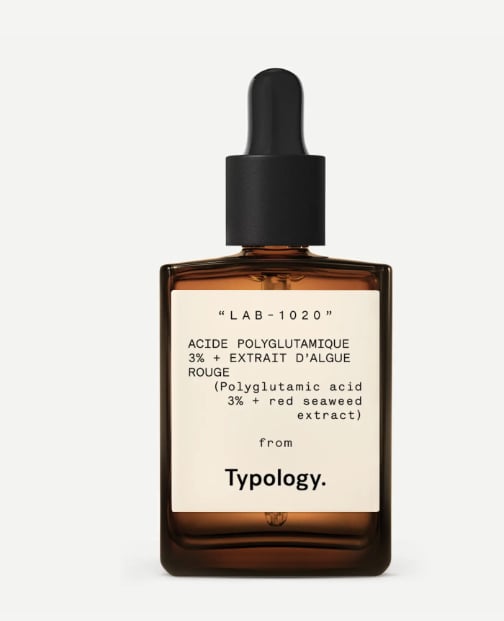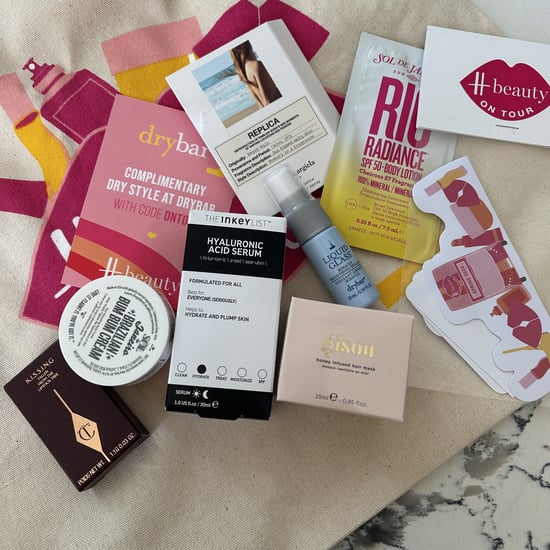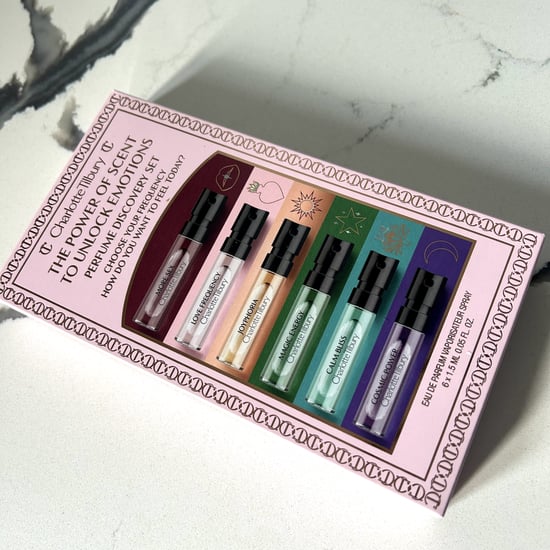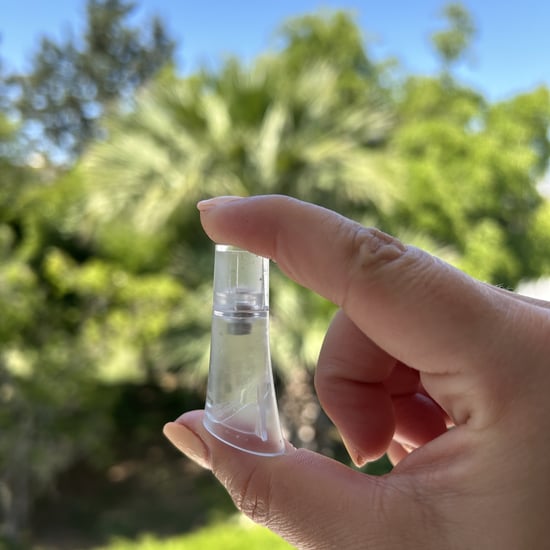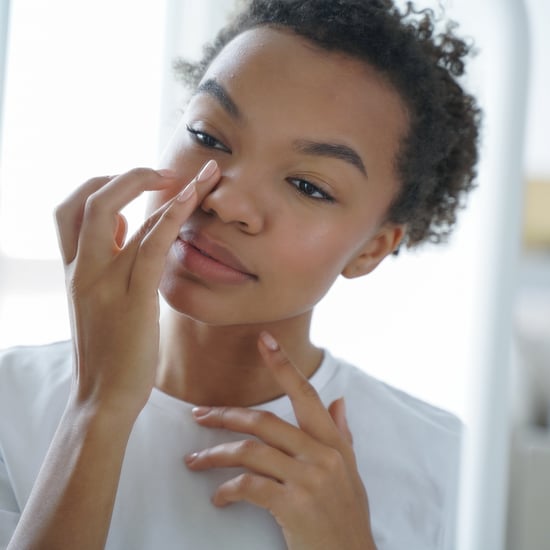What is Polyglutamic Acid? Skin Experts Break It Down
Polyglutamic Acid Is Trending, but Should You Be Adding It to Your Skincare Routine?

Thought hyaluronic acid was the best hydrator on the block? Turns out that new kid polyglutamic acid is coming for its crown. We know, another day, another buzzy skincare ingredient that promises to transform our skin. And this time, it's got a name that's not only difficult to say (try: poly-glue-ta-mick) but is complicated enough to send your predictive text into a complete meltdown. But is polyglutamic acid (also known as PGA) worth the hype? Or even worth learning how to say it? And can it really rival good old hyaluronic acid? We asked the experts for the lowdown.
What Is Polyglutamic Acid?
According to Dr Marko Lens, Consultant Plastic Surgeon and founder of Zelens, "Polyglutamic acid is a natural, biodegradable polymer of the amino acid glutamic acid produced by fermentation of Japanese soybeans with Bacillus subtilis." That's a lot of science in one sentence, so let's break it down a little.
Polyglutamic acid is a type of ingredient called a peptide and is made up of a chain of a particular type of amino acid called glutamic acid. But despite being a peptide, it doesn't work in the same way as anti-ageing peptides you might have heard of (like the ones in the much-hyped No7 Future Renew range), but "acts as a moisturising agent by locking moisture into the skin", explains Mark Curry, co-founder of the Inkey List. It's a humectant, like hyaluronic acid, which means its primary role is to attract water like a magnet. Polyglutamic acid is made by fermenting Japanese soybeans with a particular strain of bacteria that can also be found in kimchi. Think of it a bit like the skincare version of a sourdough starter, just with more bacteria and less yeast.
How Does Polyglutamic Acid Work?
So how does this little chain of amino acids work in our skin? "Polyglutamic acid is a powerhouse humectant that not only puts water into the skin but keeps it there as well," says junior doctor and skin expert, Dr Kemi Fabusiwa. It holds onto this moisture by "creating a barrier over the skin to prevent hydration loss from the inside and prevent dehydration from the outside," explains Dr Ahmed El Muntasar, a GP and award-winning aesthetician. "Polyglutamic acid can also potentially prevent something called hyaluronidase, which is the enzyme that breaks down hyaluronic acid in the skin." This last benefit is a biggie as the natural levels of hyaluronic acid in our skin deplete as we age, meaning we're more prone to dehydration the older we get.
Who Is Polyglutamic Acid Good For?
So who should be using polyglutamic acid? Well, it turns out pretty much everyone. But you'll see the biggest improvement if your skin is dehydrated or lacking in radiance.
"By binding water to the skin, polyglutamic acid is a super, glow-inducing active for dewy skin," says Georgie Cleeve, founder of Oskia Skincare. "Due to its ability to attract water, it will help minimise fine lines and wrinkles and keep skin soft, supple, and healthy as well. PGA also has antioxidant properties, inhibits the production of melanin, and strengthens the barrier function." Pretty impressive, eh?
"Ultimately all skin types can benefit from polyglutamic acid as a hydrating active, but particularly mature and dry skin, or those with a weakened barrier function," adds Georgie. The only caveat to this is if you have an oily skin type. "If you're someone that's naturally oily, then over-hydrating your skin can actually break you out a little bit," advises Dr Ahmed. "I find that sometimes this is a bit of a fine balance." If this sounds like you, introduce polyglutamic acid to your routine slowly and sparingly to avoid blemishes.
As well as improving how your skin looks when you're bare-faced, polyglutamic acid can also improve the finish of your makeup. "By increasing the water content of the epidermis (the top layer of our skin), polyglutamic acid allows your liquid foundations to glide onto the skin better for a more dewy finish," says Dr Kemi. "Its ability to plump the skin and boost elasticity makes it the perfect partner to your foundation." Wear PGA beneath your base or mix them together for maximum glow.
Is Polyglutamic Acid Better Than Hyaluronic Acid?
How does polyglutamic acid match up to the much-loved hero hydrator hyaluronic acid? "Polyglutamic acid has a large molecular size, while hyaluronic acid can have a much lower molecular weight which allows significantly deeper penetration," explains Dr Marko. "That's why, in simple terms, I would say that PGA works above the surface, and HA works below. Additionally, polyglutamic acid forms a soft, smooth film on the skin which results in the protection of the outer layer. They are different molecules with different actions, but if we're talking about hydration efficacy, then polyglutamic acid will increase skin's moisture capacity more effectively than HA.
The stats stack up in favour of PGA too, with the ability for a molecule to hold up to 5000 times its own weight in water, compared to HA's 1000.
Hyaluronic acid is very good at providing deep-down hydration in the skin, but it is polyglutamic acid's protective film that allows this newer ingredient to deliver more visible, instant results. A nice way to visualise it is to imagine that hyaluronic acid is handing the skin a nice big glass of water. This is great, but unless you follow with moisturiser, it can escape – in the same way that water in an open glass can evaporate or be spilt. Polyglutamic acid is your skincare equivalent of a sports drink. Not only does it have the extra benefit of electrolytes for more intense rehydration, but it also comes in a bottle with a lid so no liquid is lost.
PGA might be coming out on top in the battle of the humectants, but if you can, it's still more beneficial to use both ingredients in your routine rather than pick and choose. "It's not a competition, it's more of a logistic relationship," says Dr Ahmed. "They work well together. Polyglutamic acid is a new ingredient that isn't very common or very popular because it is expensive and quite difficult to make. Whereas hyaluronic acid is a lot more readily available. If you suffer from very dry skin, you can use both of these ingredients to really target those dry areas."
"Polyglutamic acid and hyaluronic acid are like scones and jam or butter and toast," adds Georgie. "They're the perfect combination, especially when cleverly combined using different molecular weights." For best results, use PGA during the day, to create a silky canvas for makeup, and HA for deep-down hydration as part of your evening routine.
How to Use Polyglutamic Acid in Your Routine
Polyglutamic acid is a friendly ingredient that plays nicely with other actives and is therefore easy to slot into your routine. "Polyglutamic is a great active to use both AM and PM and has a place in all products, from cleansers to serums and moisturisers," says Georgie. "However the best effect will be in serums and moisturisers." That's because these are left on the skin, rather than washed off, which gives them maximum opportunity to work their magic.
"Polyglutamic acid should always be applied directly against the skin in a water-based product, and before anything that contains oils," continues Georgie. This sequence is important because oil is heavier than water. If you put your polyglutamic acid product on over an oil, the oil will block its path, and the PGA won't be able to make its way into the skin.
Although it's acid by name, polyglutamic acid doesn't exfoliate the skin, so there's no real risk of overdoing it. How often you use it will depend on your skin type and individual needs. "This is where trial and error really comes into play," advises Dr Ahmed. "Try the product, apply the recommended amounts, and if it works for you, then that's great. If not, you can always add a touch more."
Interested in adding this wonder ingredient to your routine? See some of our favourite Polyglutamic Acid products ahead.
Best Polyglutamic Acid Sunscreen
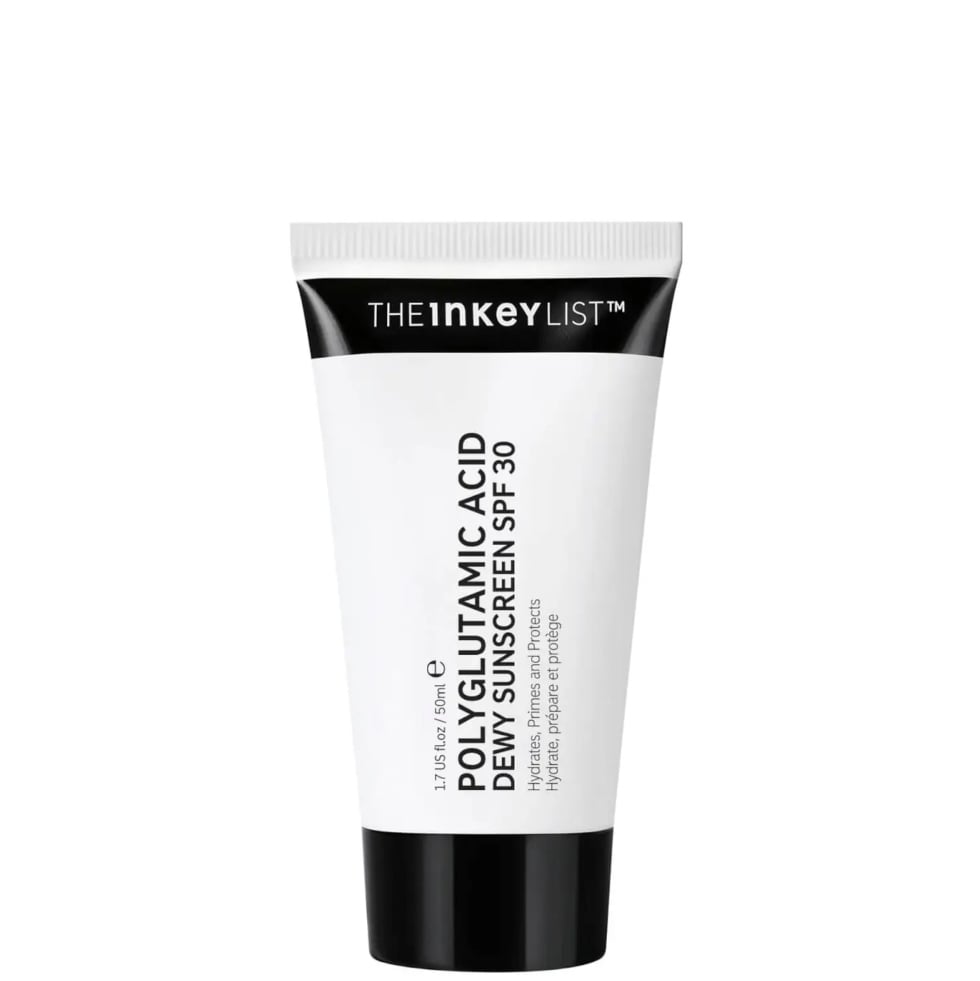
Best Polyglutamic Acid Serum
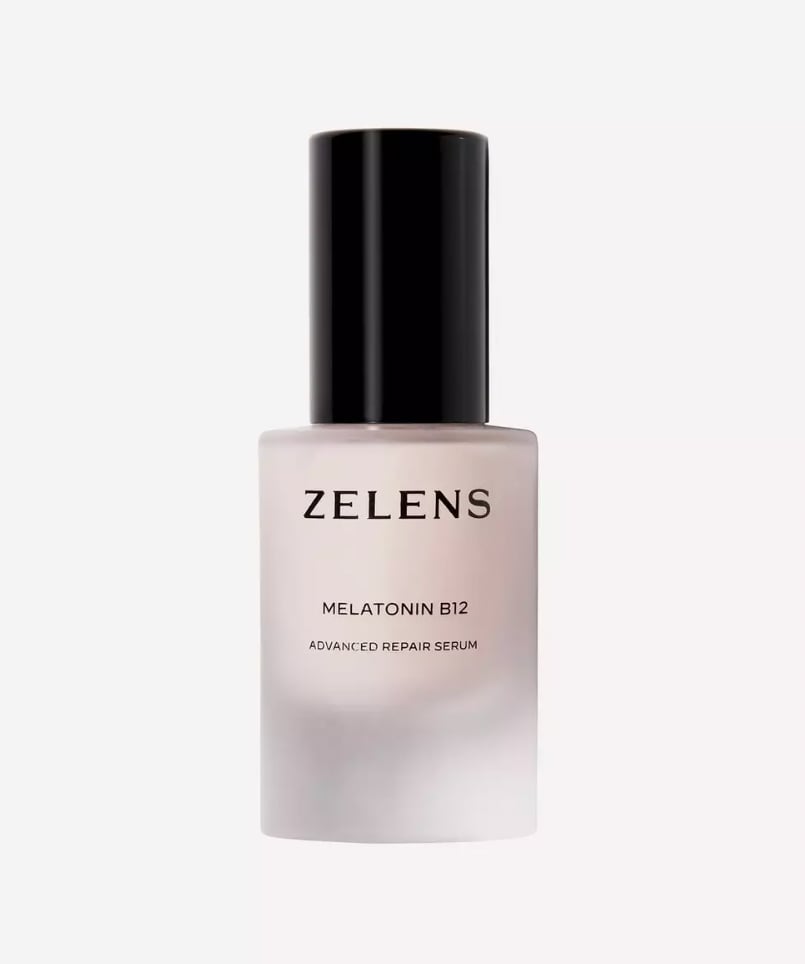
Best Soothing Polyglutamic Acid
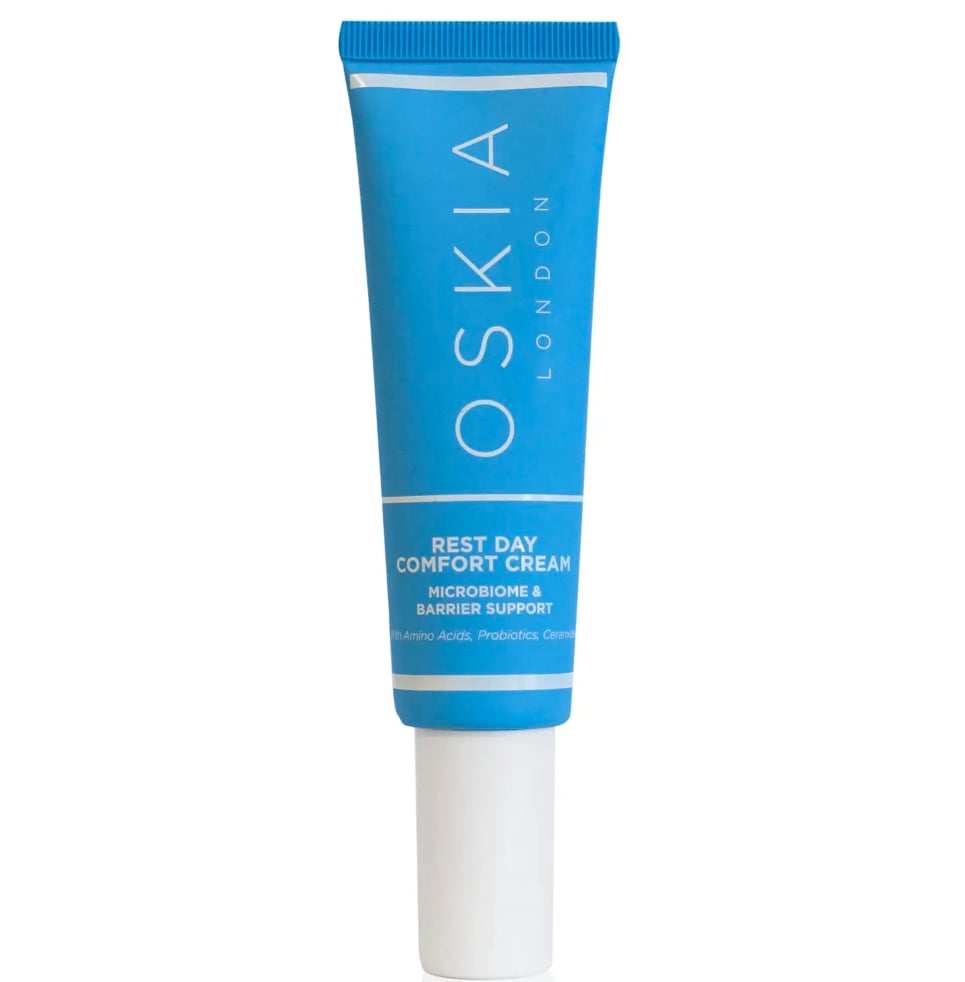
Best Plumping Polyglutamic Acid
